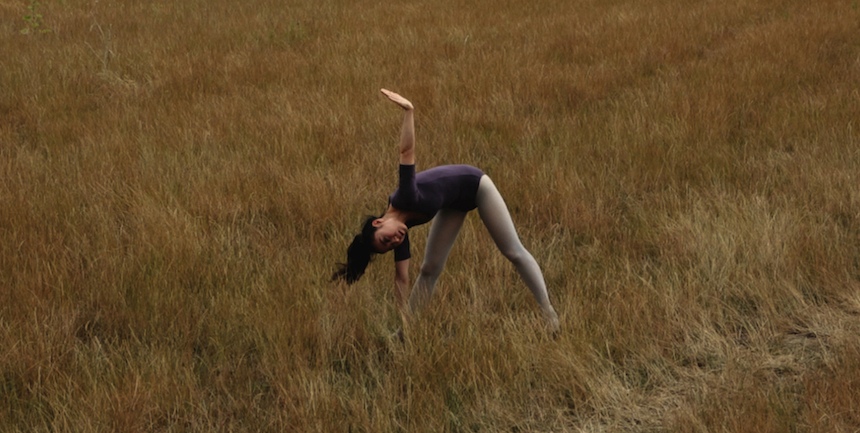Slamdance 2017 Review: KURO Spins a Spellbinding, Exquisitely Photographed Tale
Co-directors Joji Koyama and Tujiko Noriko create a hypnotic story (starring musician-actors Noriko and Jackie) about storytelling and memory, proving themselves masters of sound and image.

Don’t you wonder sometimes
’Bout sound and vision …
– David Bowie, “Sound and Vision”
When you’ve seen a countless number of films over your lifetime, the effect can be somewhat numbing, especially after viewing many examples of standard variations on standard materials, executed in standard ways. But every now and then, a film can come along that confronts you with the shock of the new, and allows you to feel renewed appreciation for the elements that go into creating cinema, to make you wonder about sound and vision, as Bowie’s song goes.
Kuro, the exquisitely haunting and mysterious feature by Joji Koyama and Tujiko Noriko – both Japanese expats who are Europe-based multi-disciplinary artists – is such a film. Rich with narrative and psychological ambiguity, vivid and intensely colorful, textured images, and a mesmerizing, hypnotic mood, Kuro is a true art film that honors both parts of that oft-overused term. Besides being deeply cinematic to its core, Kuro also melds literary qualities to its movie materials in a unique way, most specifically in its use of the device of the unreliable narrator.
This film employs a dual narrative structure, one through the images placed before us, the other through voiceover narration. Both stories concern Romi (Tujiko Noriko), a Japanese woman, and her French lover Milou (Jackie), who live together in a small apartment in Paris. Milou is a paraplegic who needs constant care for all his needs, which Romi provides. When she’s not taking care of him, Romi earns her living as a hostess in a karaoke bar. The story that plays out visually on screen is one which depicts Romi’s daily existence, alternating between working at the bar and taking care of Milou. This story features almost no spoken dialogue, save for a brief piece at the beginning and a song Romi sings in her bathtub toward the conclusion. Woven within quotidian scenes of daily life are many images of flowers, streets, and the natural world, many of which are devoid of any visible human presence. This succession of images contributes greatly to the film’s haunting, hypnotic tone.
The second story is told by Romi’s voiceover, which begins as a tale she tells Milou – who is apparently unable to speak – about a time in the past when they lived together in Japan, and when Milou was able-bodied. (The cause of Milou’s present-day paraplegic state is never explained.) It starts as a simple story of idyllic lovers, and slowly morphs into a much darker tale, with qualities of mythology and fairy tale that make one unsure of the truthfulness of the tale she is telling.
Romi’s story tells of her life in the U.S., Europe, and Japan, and her romance with Milou. Eventually this leads to the narrative’s main focus, which concerns her job in Japan as a caretaker for the elderly and infirm, and of how she became a live-in caretaker for a man named Mr. Ono. Milou, an aspiring photographer, is unable to find work and eventually moves in with Romi and Mr. Ono. Here is where the story takes a darker turn, with increasingly bizarre behavior among the three, leading to abuse, neglect, and even worse.
The most fascinating aspect of Kuro, and what makes it such a strikingly unique work, is the interplay between the images and the narration. At some points they sync up, but more often, they diverge and even directly contradict each other. The serene, quiet melancholy of many of the images contrast sharply with the increasingly ornate and, at times, violent tale Romi narrates. The fantastical nature of Romi’s narrative, especially towards its conclusion, begins to make the story more metaphorical and allegorical, and less strictly autobiographical as it progresses.
The uses of language and grammar in Romi’s story add to its disorientating nature. She begins by speaking in French, reflecting her current life in Paris, but then eventually shifts to Japanese, as she recalls her and Milou’s time in Japan and tells the strange story of Mr. Ono. The narration also shifts back and forth between first and third person, further enhancing its elusive, and allusive, qualities.
The disorientation we may feel as viewers watching this is by no means unpleasant or frustrating, even though so much is left unclear or unexplained. Rather, it allows us space to insert ourselves within the unique cinematic world Koyama and Tujiko have created. This allows us to use our imaginations to interact with those of the creators, each of us creating our own version of the film in our heads as we visualize the strange story Tujiko tells, and contemplating the tense, complicated relationships between the words spoken on the soundtrack – made intensely vivid by Tujiko’s lovely, sonorous delivery – and the exquisitely rendered images on screen.
The interplay between sound and image in Kuro has quite rightly drawn comparisons to such monumental world cinema classics as Alain Resnais’ Last Year at Marienbad and Chris Marker’s Sans Soleil. Koyama himself has cited the work of novelist and filmmaker Marguerite Duras – who also extensively made use of narration in her films, such as India Song – as an influence. But nothing about Kuro feels at all derivative; rather, these immensely talented and versatile artists – Koyama in filmmaking, animation, and graphic arts; Tujiko in filmmaking and music (she composed Kuro’s melodious, haunting score) – have created a singular and impressively accomplished work of art.







